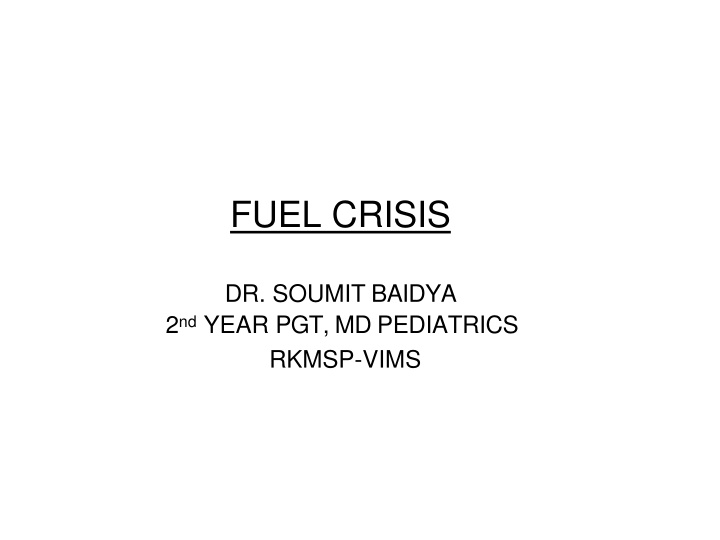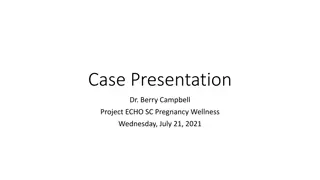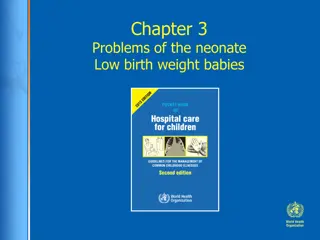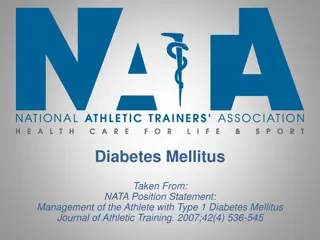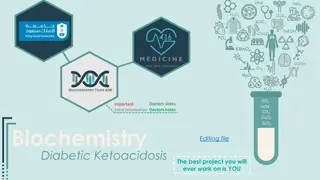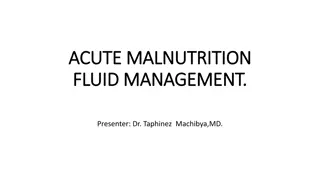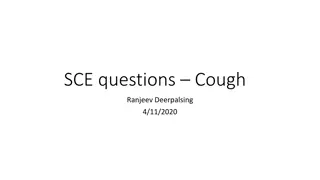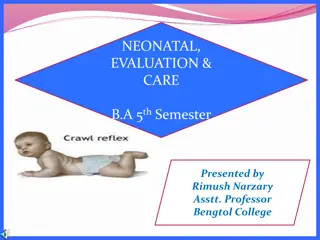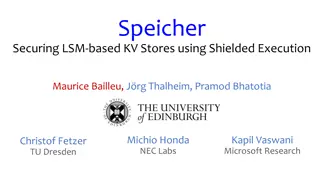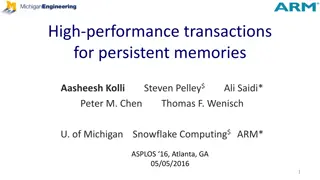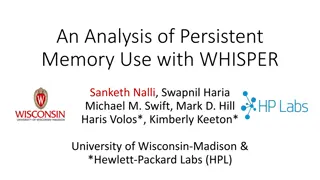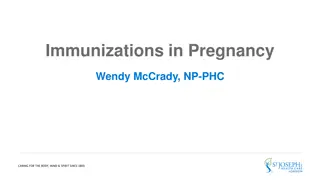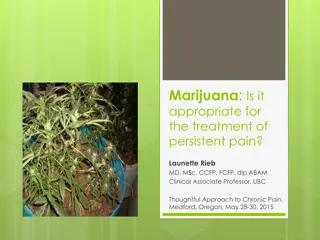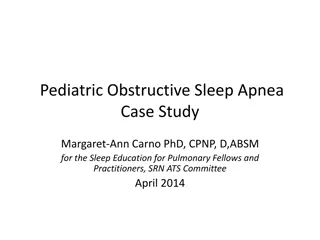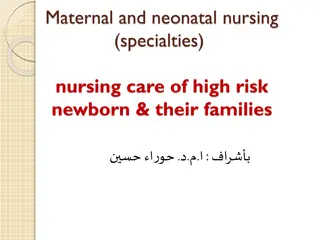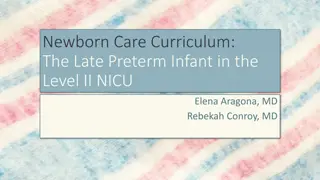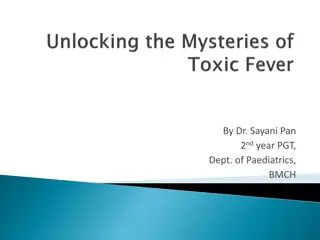Case Study: Management of Persistent Hypoglycemia in a Neonate
A late preterm male baby with gestational diabetes mellitus history presented with respiratory distress after birth. Despite initial stabilization on bubble CPAP, the baby developed persistent hypoglycemia. IV glucose therapy and sepsis screening were initiated, but challenges in maintaining normal blood glucose levels persisted. Further investigations included blood ketone levels and urine analysis. The case highlights the diagnostic and management considerations in neonatal hypoglycemia.
Download Presentation

Please find below an Image/Link to download the presentation.
The content on the website is provided AS IS for your information and personal use only. It may not be sold, licensed, or shared on other websites without obtaining consent from the author.If you encounter any issues during the download, it is possible that the publisher has removed the file from their server.
You are allowed to download the files provided on this website for personal or commercial use, subject to the condition that they are used lawfully. All files are the property of their respective owners.
The content on the website is provided AS IS for your information and personal use only. It may not be sold, licensed, or shared on other websites without obtaining consent from the author.
E N D
Presentation Transcript
FUEL CRISIS DR. SOUMIT BAIDYA 2nd YEAR PGT, MD PEDIATRICS RKMSP-VIMS
CASE 1 A late preterm(36wks)male baby ,AGA with a BW-2.5kg was born by LSCS to a 26 year old primigravida. Antenatal History- Mother had gestesionaldiabetes mellitus diagnosed at 32 weeks of gestation and was on regular insulin. Presented with respiratory distress immediately after birth. Shiftedto NICU
On examination babys C/R/T/A good , CRT<3 seconds, Respiratory rate-85/minute B/LChest- air entry- decreased,SCR(+),grunting Spo2- 84% in room air Capillary blood gas analysis normal CVS- NAD P/A soft ,non-tender,no organomegaly (Downe Score-5) Baby was put on bubble Continue PositiveAirway Pressure (PEEP-5 cm,Flow-8L/minute,Fio2-30%)
Chest X Ray view shows no significant abnormality DAY 2 : Baby was stable on bubble CPAP, maintaining SPO2>94%, respiratory rate 45/minute,no subcostal , intercostal retraction ,HR- 146/minute,CVS-NAD,other System normal, CBG-74 mg/dl ,euthermic. Hence bubble CPAP was omitted and put on Head box O2 Baby gradually improved and was put on demand feeds with breast milk and was maintaing eugycemia .
DAY 3: The baby was handling well and was ready to be roomed in when a routine CBG estimation showed a blood glucose of 20 mg/dl. IV glucose @ 6mg/kg/min was started after initial bolus dose. Sepsis screening was sent. Baby had recurrent bouts of Hypoglycemia for which GIR was gradually increased to 12mg/kg/min Sepsis screening was normal.
Baby failed to maintain normal blood glucose level despite a G.I.R of 12 mg/kg/min . Hence a diagnosis of persistent hypoglycemia was entertained and was worked up for the same.
Blood for ketone level -0.2 mmol/L Urine for reducing substances absent Capillary blood gas analysis- no acidosis
Sent Critical sample at the time of hypoglycemia (CBG-30 mg/dl) for the diagnosis of hyperinsulinism. RESULTS: 1.Fasting blood glucose- 32 mg/dl 2.Insulin- 5.82 mIU/L 3.Cortisol level- 10 mcg/100 ml (3.7- 19.4 mcg/100ml) 4.C-peptide- 1.8 ng/ml (0.4-2.2 ng/ml) 5.Plasma ammonia- 102 mcg/100ml (90-150 mcg/100ml) 6.Blood lactate level- 1.2 mmol/L (0.5-1.6 mmol/L) 7.Growth hormone-18 ng/ml (5-40 ng/ml) 8.TSH 6.5 mIU /ml (0.5-16.1 mIU /ml) 9.FT4- 1.7 ng/dl (0.8-3 ng/dl)
A diagnosis of persistent hypoglycemia was made in view of the following: . 1.G.I.R greater than 12 mg/kg/minute 2.Detectable insulin > 2 mIU /L 3 Blood glucose level 32 mg/dl 4.Normal cortisol level So we immediately started Diazoxide @ 10 mg/kg in two divided doses . After starting diazoxide baby became euglycemic so GIR was gradually tapered .
Baby was put on demand feeding and diazoxide was continued . Dose of diazoxide was gradually tapered 24 hourly with continuous monitoring of blood glucose level and was stopped by Day 13. Repeat insulin level was normal USG Whole Abdomen : normal Baby was discharged in a stable condition on Day 15 with a diagnosis of Persistent Hypoglycemia due to Transient Hyperinsulinism.
C A SE 2 A 8 days old late preterm(35w4d)/AGA(2.5kg) male baby was born by NVD to a 26 year old primigravida with a history of premature rupture of membrane with no history of diabetes Mellitus. Baby presented to our NICU with lethargy, jitteriness and poor feeding since day 6 of life. On examination, C/R/T/A poor, CRT<3 seconds, Hypoglycemia(CBG-20 mg/dl) Other systems -normal
IV glucose @ 6 mg/kg/min was started after initial bolus dose Sepsis screening was sent and antibiotic was started. Initially euglycemic state was maintained, but again CBG started falling (CBG<30 mg/kg). Increased G.I.R by 2 mg/kg/min Sepsis screeing was negative and blood culture was sterile, so antibiotic was stopped but euglycemia was not achieved despite a G.I.R 12mg/kg/min
So a diagnosis of persistent hypoglycemia was made and worked up as per protocol Blood for ketone level-0.3 mmol/L Urine for reducing substances- absent Critical sample at the time of hypoglycaemia(CBG=30 mg/dl) for the diagnosis of hyperinsulinism was sent RESULTS: 1.Fasting blood glucose- 30 mg/dl
2.Insulin-11.4 mIU / L 3.Cortisol level 14.4 mcg /100 ml (3.7-19.4mcg/100 ml) 4.C-peptide -2.62 ng/ml (0.4 2.2 ng/dl) 5.Plasma ammonia- 273 mcg/100 ml (90-150 mcg/dl) 6.Blood lactate level- 1.1 mmol/L (0.5- 1.6mmol/L) 7.TSH- 8.9 mIU /ml (0.5-16.1mIU /ml) 8.FT4- 1.83 ng/dl (0.8-3 ng/dl) 9.Growth hormone- 11 ng/ml (5-40 ng/ml)
Capillary blood gas analysis- no acidosis USG Whole Abdomen- normal study As plasma ammonia level was high Was worked up for IEM by tandem mass spectrometry which came out to be normal.
So started Diazoxide @ 10 mg/kg/dose in two divided doses After starting diazoxide baby became euglycemic ( CBG >110 mg/kg) Started tapering G.I.R by 2 mg/kg/min Started oral feeding with continuing diazoxide . Baby gradually stabilized, IV fluids was omitted and breast feeding established Diazoxide was gradually being tapered
But baby became hypoglycemic (CBG=35mg/dl) after tapering diazoxide . Continued diazoxide @ 10 mg/kg/dose . Insulin level and Ammonia level was repeated Insulin- 0.19mIU/L Ammonia-163 mcg/100 ml
A diagnosis of Hyperinsulinism with Hyperammonia (HIHA) was made Plan: Genetic testing for GLUD-1 activating mutation . The baby was discharged in a stable condition on Diazoxide and advise to monitor blood sugars regularly.
Discussion Hyperinsulinism is the most common cause of persistent hypoglycemia in newborn. It may be associated with an increased risk of brain injury as it not only decreases glucose level but also suppresses fatty acid release and ketone body synthesis. Hyperinsulinism-hyperammonemia (HIHA) syndrome is an autosomal dominant disorder that results in the excess production of insulin and ammonia .HIHA syndrome is caused by increased glutamate dehydrogenase (GDH) 1 activity due to the presence of overactivating point mutations in GDH. These point mutations prevent Guanosin Triphosphate (GTP) binding and inhibition of GDH which causes GDH to remain active.
HIHA syndrome Mutation in GLUD1 gene Activity of Glutamate Dehydrogenase Breakdown of Glutamate Alpha ketoglutarate Ammonia ATP Ca++ Insulin secretion
HIHA Spectrum of Clinical Features from Asymptomatic Hyperammonia Recurrent Hypoglycemia Seizures ADHD in later life Ref: The hyperinsulinism/hyperammonemia syndrome. Andrew A Palladino1, Charles A Stanley Rev Endor Metab Disord. 2010 Sep;11(3):171-8. DOI: 10.1007/s11154-010-9146-0 Abstract The hyperinsulinism/hyperammonemia (HI/HA) syndrome is the second most common form of congenital hyperinsulinism (HI).
Learning Points 1. It is important to have a high index of suspicion and diagnose hyperinsulinemic hypoglycemia so that early treatment may be initiated to prevent hypoglycemia induced brain injury. 2. Refractory hypoglycemia without ketosis hyperinsulinemic hypoglycemia.
3.Presence of ketosis Glycogen storage disorder ,GNG defects. organic acidemias, 4. Persistent hypoglycemia with presence of non-glucose reducing substances in urine is suggestive of galactosemia.
